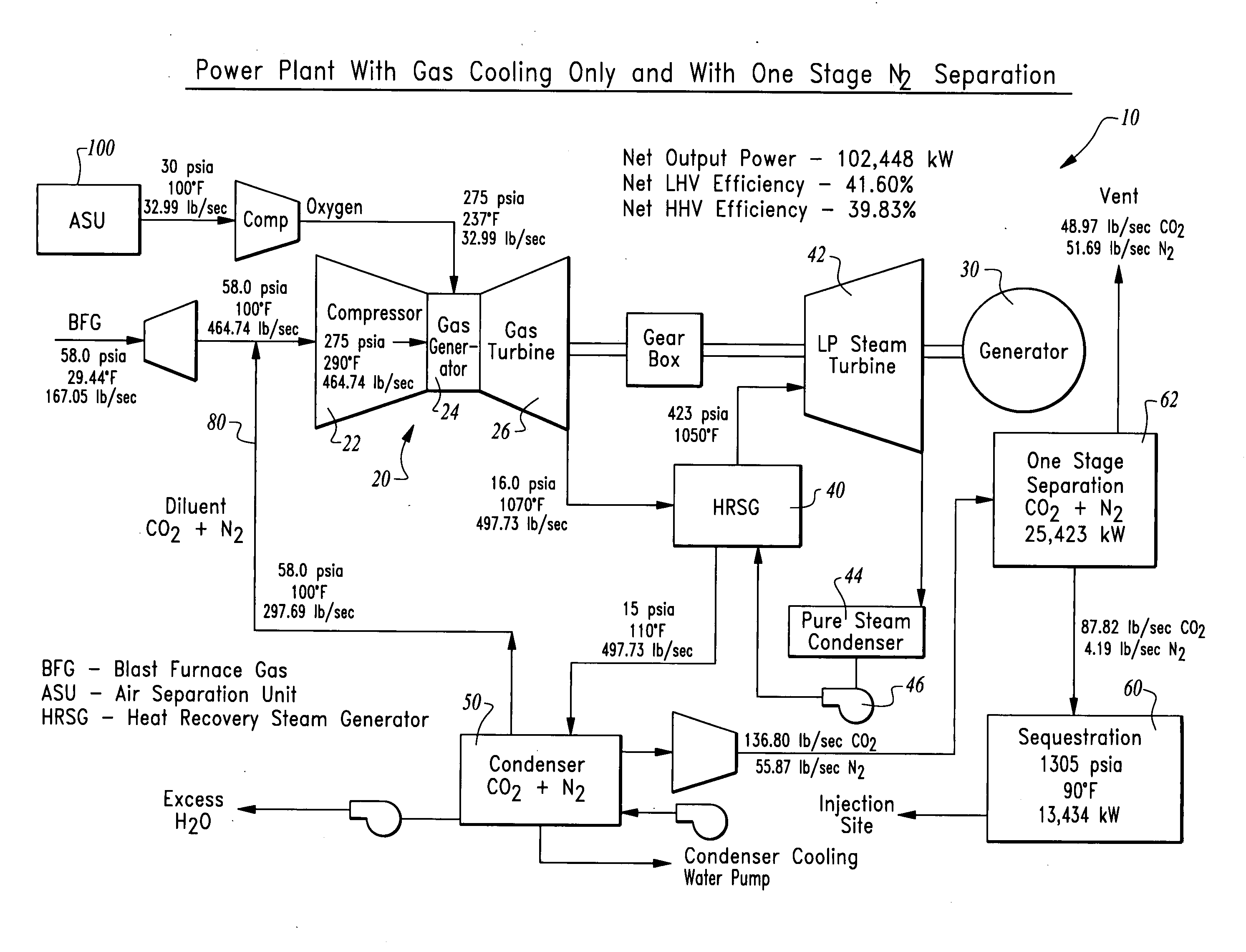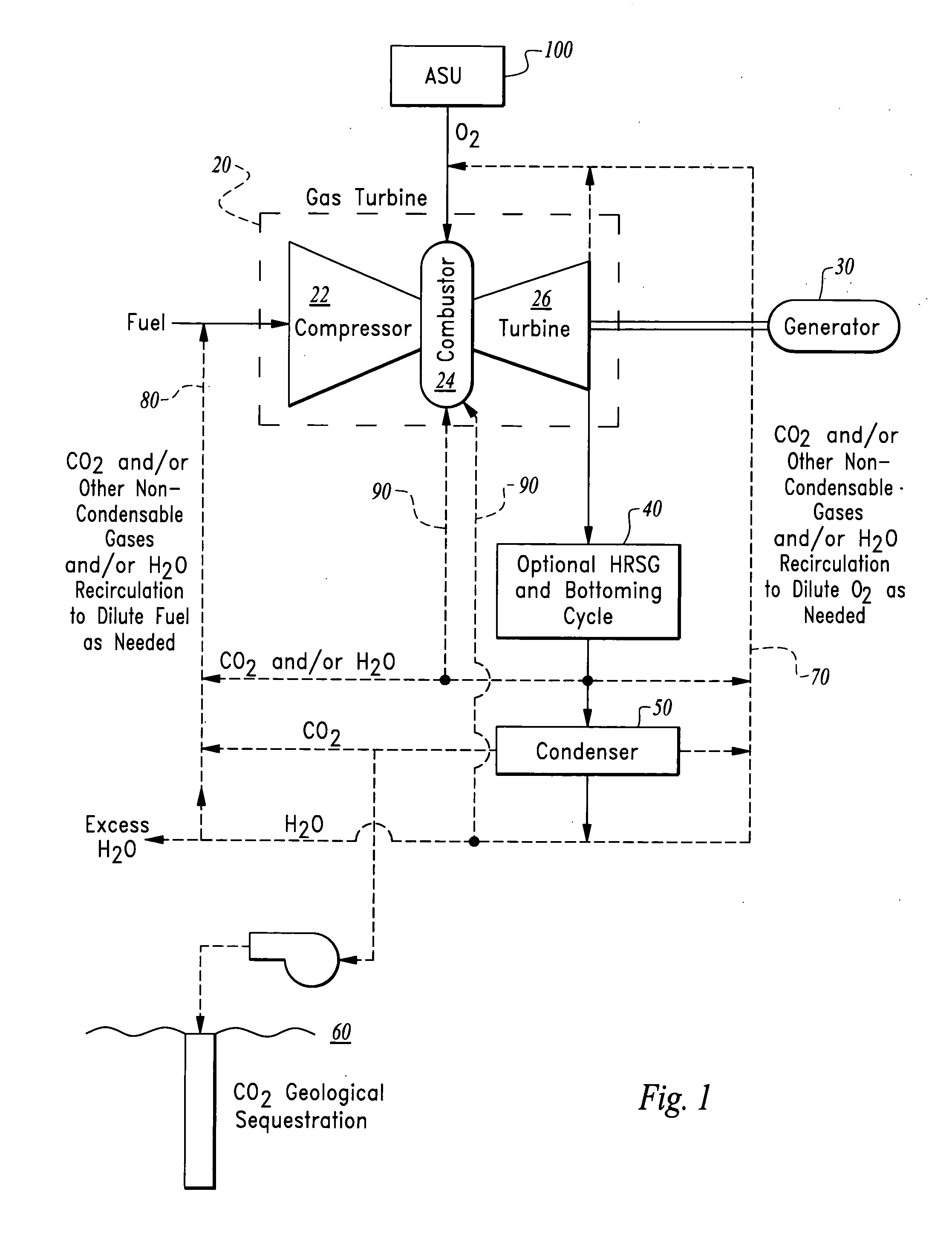Methods of oxy-combustion power generation using low heating value fuel
a technology of oxy-combustion and low heating value, which is applied in the direction of liquefaction, machines/engines, lighting and heating apparatus, etc., can solve the problems of low heating value gas readily being utilized in gas turbines, low efficiency of such rankine cycle power plants, and general lower efficiency associated with use of such low heating value fuel
- Summary
- Abstract
- Description
- Claims
- Application Information
AI Technical Summary
Benefits of technology
Problems solved by technology
Method used
Image
Examples
Embodiment Construction
[0031]Referring to the drawings, wherein like reference numerals represent like parts throughout the various drawing figures, reference numeral 10 is directed to a power generation system with a reverse circuit gas turbine 20 (FIGS. 1 and 2) centrally featured therein. In this example system a standard gas turbine 20 can be utilized to combust a low heating value fuel, such as blast furnace gas (BFG). The fuel and air circuits of the gas turbine 20 are reversed so that the low heating value fuel is introduced into a compressor 22 of the gas turbine 20 while the oxygen is directed into a combustor 24 of the gas turbine 20 through the “fuel inlet.” In a second embodiment, the low heating value fuel is combusted within an oxy-combustion gas generator 120 power generation system 110 featuring recirculation of non-condensable gases such as those which are often produced by combustion of a low heating value fuel that includes non-condensable gas producing constituents therein, such as nit...
PUM
 Login to View More
Login to View More Abstract
Description
Claims
Application Information
 Login to View More
Login to View More - R&D
- Intellectual Property
- Life Sciences
- Materials
- Tech Scout
- Unparalleled Data Quality
- Higher Quality Content
- 60% Fewer Hallucinations
Browse by: Latest US Patents, China's latest patents, Technical Efficacy Thesaurus, Application Domain, Technology Topic, Popular Technical Reports.
© 2025 PatSnap. All rights reserved.Legal|Privacy policy|Modern Slavery Act Transparency Statement|Sitemap|About US| Contact US: help@patsnap.com



